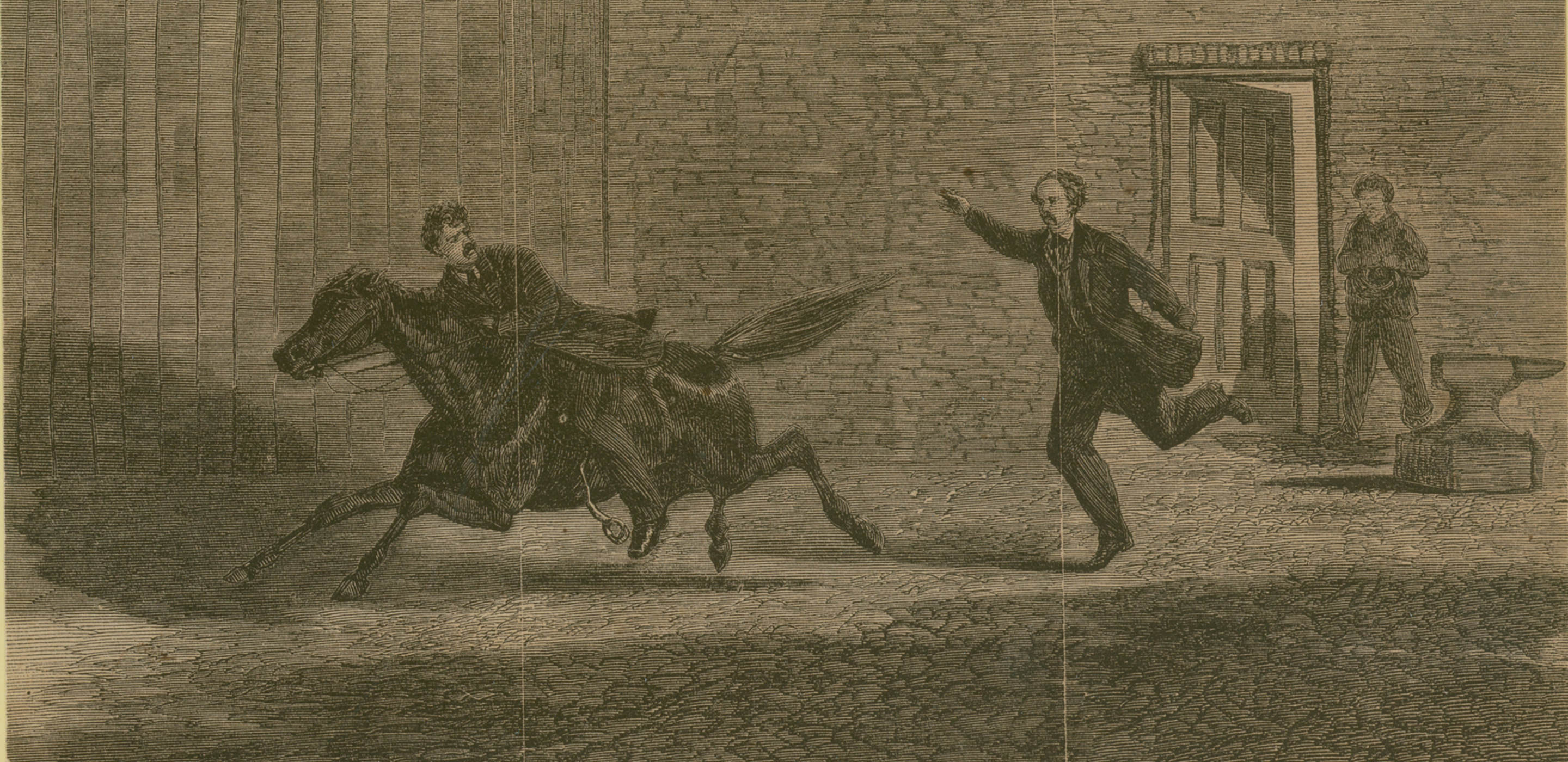
Material Evidence: John Wilkes Booth
“Tonight I try to escape these bloodhounds once more … I have too great a soul to die like a criminal.”
Booth’s diary, written between April 17–22, 1865
For twelve days, John Wilkes Booth led the U.S. Army on a chase through Maryland and Virginia before finally being caught in a barn near Port Royal, Virginia. Cornered alongside fellow conspirator David Herold and surrounded by federal troops, Herold quickly surrendered. Booth refused.
Booth pleaded with the troops to be allowed to fight with his pistol and knife. After hours of negotiation, Thomas “Boston” Corbett, a solder on the scene, shot into the barn and wounded Booth. President Lincoln’s assassin died a few hours later on the scene. The soldiers found the items below in his possession.
Examine the Evidence: How do these objects fit into this story? Can you think of other objects that have profoundly affected the history of a country?
What Booth Carried
John Wilkes Booth’s escape from Washington lasted 12 days. See what he had with him during his journey.
Protect Our History
The night of April 14, 1865, forever changed our national history. Together, Ford’s Theatre Society and the National Park Service partner to protect the artifacts from that night. Through these objects, we can better understand how that single event transformed our nation. Give to Ford’s Theatre to help continue sharing the stories that shaped a nation.
